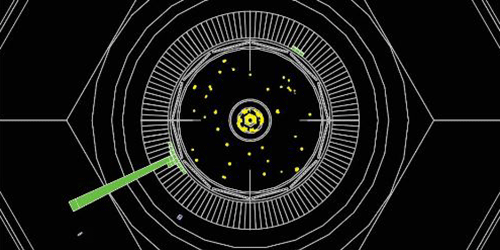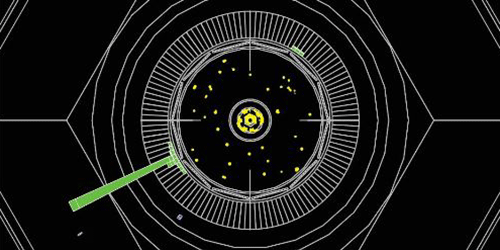Dark Photon Conjecture Fizzles
Dark photons sound like objects confused about their purpose, but in reality they are part of a comprehensive theory of dark matter. Researchers imagine that dark photons have photon-like interactions with other dark matter particles. And these hypothetical particles have recently gained interest because they might explain why the observed value of the muon’s anomalous magnetic moment disagrees slightly with predictions. However, this muon connection now appears to have been ruled out by the BaBar Collaboration at the SLAC National Accelerator Laboratory in California. The researchers found no signal of dark photons in their electron-positron collision data.
Like the normal photon, the dark photon would carry an electromagnetic-like force between dark matter particles. It could also potentially have a weak coupling to normal matter, implying that dark photons could be produced in high-energy collisions. Previous searches have failed to find a signature, but they have generally assumed that dark photons decay into electrons or some other type of visible particle.
For their new search, the BaBar Collaboration considered a scenario in which a dark photon is created with a normal photon in an electron-positron collision and then decays into invisible particles, such as other dark matter particles. In this case, only one particle—the normal photon—would be detected, and it would carry less than the full energy from the collision. Such missing-energy events can occur in other ways, so the team looked for a “bump” or increase in events at a specific energy that would correspond to the mass of the dark photon. They found no such bump up to masses of 8 GeV. The null result conflicts with models in which a dark photon contribution brings the predicted muon magnetic moment in line with observations.
This research is published in Physical Review Letters.
–Michael Schirber
Michael Schirber is a Corresponding Editor for Physics based in Lyon, France.





